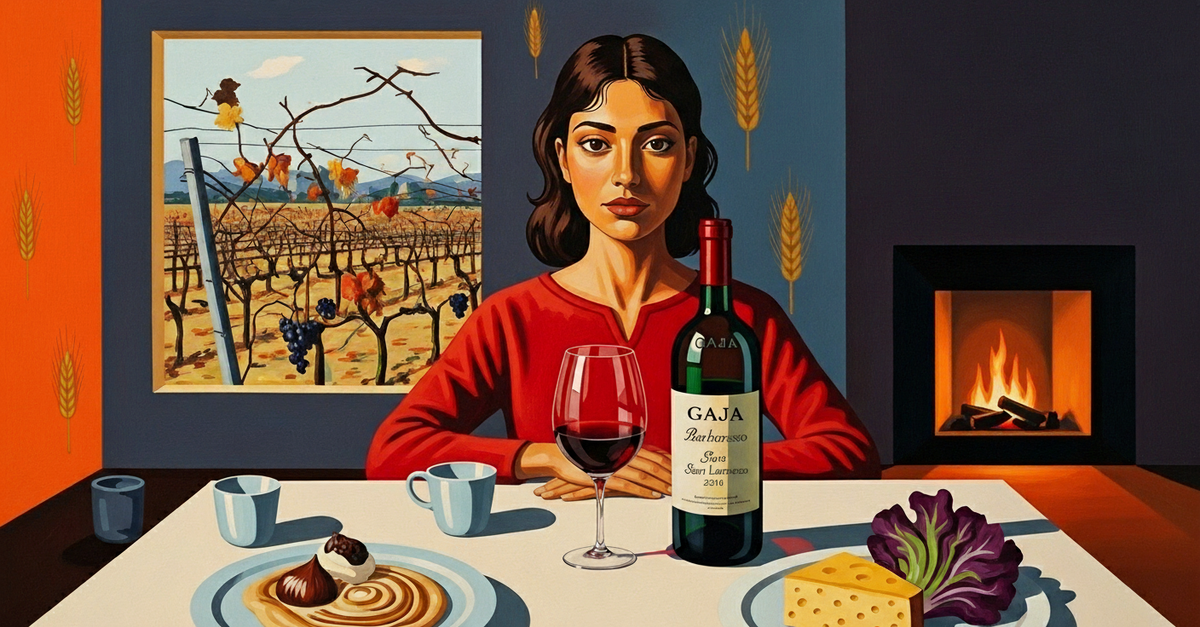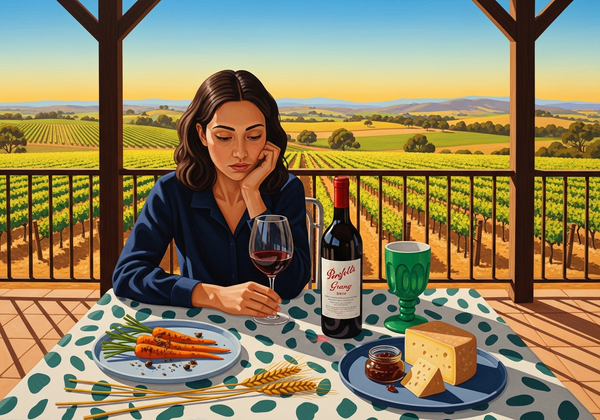The Ledger of Stone and Blossom: Gaja Barbaresco Sorì San Lorenzo 2016
Gaja Barbaresco Sorì San Lorenzo 2016 food pairing guide with unique, terroir-rooted matches from lamb ribs to radicchio and chestnuts.

When I pour this wine, I see the season written in its color: deep garnet shading toward ruby flame, as though dusk had slipped into the glass. The first breath is austere—tar, graphite, and smoke rising like incense. With time in a wide decanter, an hour at least, violets emerge, and the sternness eases. Served at 16–18 °C in a tulip-bowled glass, the tannins—the drying clasp along the cheeks, so typical of Nebbiolo—begin their slow surrender. A young warrior now, but destined to become a sage, if given years in the cellar.
From Piedmont’s Langhe hills, this is Angelo Gaja’s Sorì San Lorenzo, a vineyard that leans south on limestone and clay, where Nebbiolo sinks its roots into bedrock. Sunlit days, crisp nights—this land sculpts the grape into purity and tension. Gaja, the vintner who reshaped Barbaresco’s destiny, has never stripped the place of its voice. Here, the perfume of roses and the grip of tannin remain loyal to the land’s truth.
The 2016 season was steady, generous without indulgence. The wine carries black cherry and rose petal, underscored by iron filings and wet stone. The palate is taut, acidity bright, tannins polished but resolute. Its finish lengthens, unfurling cedar and licorice with a mineral hush. Oak lends a whisper of spice, not disguise but frame. Drinkable now with patience, yet it will find its truest form by 2030–2040, when blossom turns to truffle, and tar deepens into forest floor.
The lamb of fire and the marrow of the bone
Sorì San Lorenzo craves partners of strength, not submission. Imagine lamb ribs grilled over vine cuttings, their fat sizzling into flame, their edges charred, their rosemary crust echoing the wine’s floral herb. Each bite is a duel where tannin is softened by fat, acidity sharpened by smoke. Another union is Piedmont’s own finanziera, a braise of veal offal with Marsala and porcini. This ancient dish, earthy and unctuous, plays to the Nebbiolo’s mineral core while allowing the bright acidity to cleanse each indulgent mouthful.
Eastward journeys of lacquer and spice
This wine’s tensile acidity and savory frame call not only for Italian tradition but for flavors that glisten with intensity. Peking duck, its lacquered skin shattering under the bite, its flesh yielding, finds a perfect foil in the wine’s brightness. The sweet-savory glaze becomes an unlikely but thrilling bridge to Nebbiolo’s fruit. From further south, a Kashmiri rogan josh—lamb braised with Kashmiri chili, cardamom, and cinnamon—meets the wine in spice and heat, the tannin cutting through richness while the fragrance mirrors the aromatics of oak and rose.
The earthbound banquets of the vine goddess
For those who feast without meat, the wine allies with dishes rooted in the soil. A risotto enriched not only with porcini but finished with hazelnut oil becomes an echo of Langhe’s own forests. The creamy texture balances tannin, while the nutty note amplifies the wine’s depth. Another treasure: charred radicchio draped with aged Taleggio. The bitterness of the chicory, the ooze of the cheese, the faint smokiness of the grill—together they converse with the wine’s floral, iron, and tarred layers.
Quiet indulgences, the whisper of roots
Sometimes the truest pairings are modest. A chestnut purée, silken and faintly sweet, steadies the wine’s darker tones, reminding me of autumn’s descent when I follow my brother into the underworld. Or Jerusalem artichokes roasted in duck fat until caramelized, their sweetness binding to the Nebbiolo’s fruit while their earthy undertone amplifies its mineral hush. These are not grand feasts, but small signatures, the marginalia in the scribe’s book that give the story its texture.
In each glass I taste the ledger of my own fate: half in the sunlit world, half in shadow. Sorì San Lorenzo 2016 is the same, carrying both blossom and stone, beauty and severity. It asks for patience, respect, and imagination. Let it breathe, let it age, let it converse with food not as ornament but as partner. And when you drink, think not only of flavor but of story—the vine’s struggle, the season’s voice, the centuries carved into limestone. In that moment, you are not merely a guest at the table but a witness in the great book of the vine.





